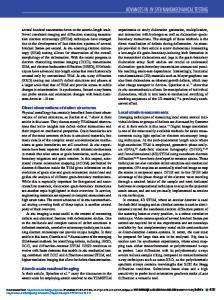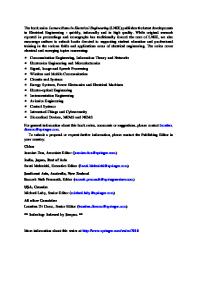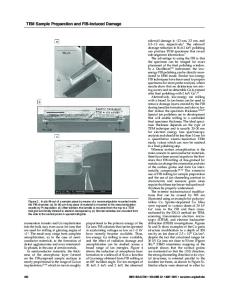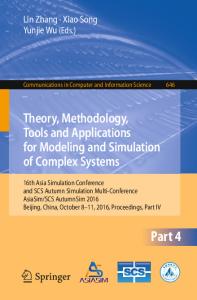Nanomechanical Testing of Hydrated Biomaterials: Sample Preparation, Data Validation and Analysis
- PDF / 220,585 Bytes
- 6 Pages / 612 x 792 pts (letter) Page_size
- 13 Downloads / 311 Views
R2.5.1/Y2.5.1
Nanomechanical Testing of Hydrated Biomaterials: Sample Preparation, Data Validation and Analysis Jessica D. Kaufman1 and Catherine M. Klapperich1,2 1 Department of Biomedical Engineering, Boston University, Boston, MA 02215, U.S.A. 2 Department of Manufacturing Engineering, Boston University, Boston, MA 02215, U.S.A. ABSTRACT Implants, tissue engineering scaffold materials, drug delivery and bio-micro electromechanical systems (BioMEMs) all use polymer or hydrogel materials. These applications require both mechanical performance and successful integration of the material into a biological environment. Mechanical strength, storage and loss moduli, wear resistance and surface adhesion properties are all critical in biomedical device design and can be determined using nanoindentation. The difficulty of obtaining large samples of specialized materials, and the complexity of testing soft materials in traditional materials testing apparatus, make nanoindentation an attractive alternative. Our previous research using nanoindentation to measure the surface mechanical properties of non-hydrated polymers led to improvement in nanoindentation testing protocols. One of the major challenges in using this technique for hydrogels and tissues is maintaining and controlling hydration of the materials during the test. Here we describe the design of a microfluidic platform for nanoindentation that facilitates continuous hydration of hydrogel samples and high throughput nanomechanical testing. Data from creep experiments on synthetic, hydrated poly-2-hydroxyethyl methacrylate (poly-HEMA) are presented. In addition, we show data to validate the materials properties determined from nanomechanical testing by complementary testing. Finally, the data is fitted to a phenomenological model for viscoelastic materials, specifically the three-element standard linear solid model used by Cheng et al. [1]. INTRODUCTION and BACKGROUND The Hysitron TriboIndenter (Hysitron, Minneapolis, MN) was initially developed for testing hard materials. There have been many obstacles to effectively applying it to characterization of softer and hydrated samples. Many biomaterials and tissues are softer than materials traditionally tested using nanoindentation, and they must be tested while hydrated to accurately extract mechanical properties relevant to function in vivo. Without hydrated data for biomaterials and tissues, intelligent de novo design of tissue engineered systems cannot proceed. Thus, our laboratory has made several modifications to the nanoindentation protocols for hard materials in order to repeatably determine mechanical properties of soft and hydrated samples. Harder samples are indented with loads of up to 10,000 microNewtons. Much smaller loads are required for testing of softer materials. This requirement is partly due to the transducer’s maximum displacement of 5 microns. However, if deeper indents were allowed, the data from displacements greater than 10% of sample thickness would have to be ignored in order to avoid substrat
Data Loading...











